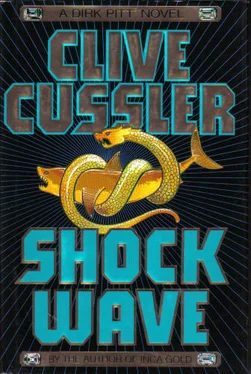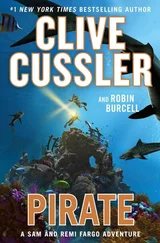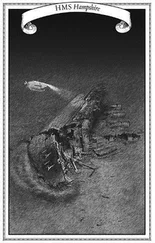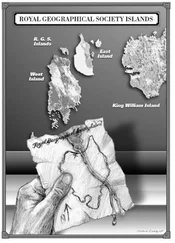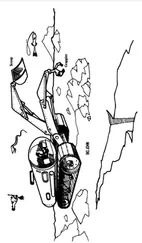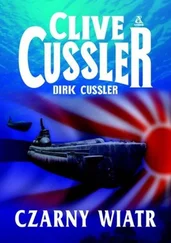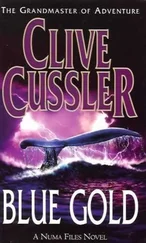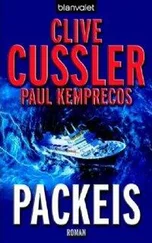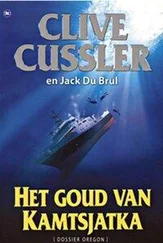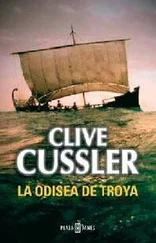Clive Cussler - Shock Wave
Здесь есть возможность читать онлайн «Clive Cussler - Shock Wave» весь текст электронной книги совершенно бесплатно (целиком полную версию без сокращений). В некоторых случаях можно слушать аудио, скачать через торрент в формате fb2 и присутствует краткое содержание. Год выпуска: 1996, ISBN: 1996, Издательство: Simon & Schuster, Жанр: Детектив, на английском языке. Описание произведения, (предисловие) а так же отзывы посетителей доступны на портале библиотеки ЛибКат.
- Название:Shock Wave
- Автор:
- Издательство:Simon & Schuster
- Жанр:
- Год:1996
- ISBN:978-0684802978
- Рейтинг книги:5 / 5. Голосов: 1
-
Избранное:Добавить в избранное
- Отзывы:
-
Ваша оценка:
- 100
- 1
- 2
- 3
- 4
- 5
Shock Wave: краткое содержание, описание и аннотация
Предлагаем к чтению аннотацию, описание, краткое содержание или предисловие (зависит от того, что написал сам автор книги «Shock Wave»). Если вы не нашли необходимую информацию о книге — напишите в комментариях, мы постараемся отыскать её.
Shock Wave — читать онлайн бесплатно полную книгу (весь текст) целиком
Ниже представлен текст книги, разбитый по страницам. Система сохранения места последней прочитанной страницы, позволяет с удобством читать онлайн бесплатно книгу «Shock Wave», без необходимости каждый раз заново искать на чём Вы остановились. Поставьте закладку, и сможете в любой момент перейти на страницу, на которой закончили чтение.
Интервал:
Закладка:
Maeve threw herself into weaving two sails from the leafy branches. For simplicity Pitt had decided to step the mast York had salvaged from his ketch, to take a spanker on the mizzen and a square sail on the mainmast. Maeve wove the larger sail for the mainmast first. The first few hours were spent experimenting, but by late afternoon she began to get the hang of it and could weave a square meter in thirty minutes. By the third day, she was down to twenty minutes. Her matting was so strong and tight, Pitt asked her to make a third sail, a triangular jib to set forward of the mainmast.
Together, Pitt and Giordino unbolted and lifted the ketch’s upper deckhouse and mounted it over the forward part of the steering cockpit. This abbreviated section of the ketch was then lashed on top of the buoyancy tubes from their little boat, which now served as the center hull. The next chore was to step the tall aluminum masts, which were reduced in height to compensate for the shorter hull and lack of a deep keel. Since no chain plates could be attached to the neoprene buoyancy tubes, the shrouds and stays to support the masts were slung under the hull and joined at a pair of turnbuckles. When finished, the hybrid craft had the appearance of a sailboat perched on a hovercraft.
The following day, Pitt reset the ketch’s rudder to ride higher in the water, rigging it to a long tiller, a more efficient system for steering a trimaran. Once the rudder was firmly in place and swung to his satisfaction, he attacked the forty-year-old outboard engine, cleaning the carburetor and fuel lines before overhauling the magneto.
Giordino went to work on the outriggers. He chopped down and trimmed two sturdy beech trees whose trunks curved near their tops. Next he placed the logs alongside the hull and extended them out with the curved sections facing forward like a pair of skis. The outriggers were then lashed to cross-member logs that ran laterally across the hull near the bow and just aft of the cockpit and were braced fore and aft. Giordino was quite pleased with himself, after he put a shoulder against the outriggers and heaved mightily, proclaiming them solid and rigid with no indication of give.
As they sat around the fire at dawn, warding off the early morning chill of the southern latitudes, Pitt pored over York’s navigational and plotting charts. At noon he took sights of the sun with the sextant, and later, at night, he shot several stars. Then with the aid of the nautical almanac and the “Short Method” tables that cut trigonometry calculations to bare bones, he practiced fixing his position until his figures accurately matched the known latitude and longitude of the Misery Islands on the chart.
“Think you can hit Gladiator Island on the nose?” Maeve asked him over dinner on the second evening before the launch.
“If not the nose, then the chin,” Pitt said cheerfully. “Which reminds me, I’ll need a detailed map of the island.”
“How detailed?”
“Every building, every path and road, and I’d like it all to scale.”
“I’ll draw you a map from memory as accurately as I can,” Maeve promised.
Giordino chewed on a small thigh from a frigate bird Pitt had managed to shoot with his miniature automatic pistol. “What do you make the distance?”
“Precisely 478 kilometers as the crow flies.”
“Then it’s closer than Invercargill.”
“That’s the beauty of it.”
“How many days will it take to arrive?” asked Maeve.
“Impossible to say,” answered Pitt. “The first leg of the voyage will be the hardest, tacking to windward until we pick up friendly currents and easterly breezes blowing off New Zealand. With no keel to carve the water and prevent them being blown sideways, trimarans are notoriously inept when it comes to sailing into the wind. The real challenge will come after we set off. Without a shakedown cruise we’re in the dark as to her sailing qualities. She may not tack to windward at all, and we may end up being blown back toward South America.”
“Not a comforting thought,” said Maeve, her mind clouded with the appalling implications of a ninety-day endurance trial. “When I think about it, I’d just as soon remain on dry land and end up like Rodney York.”
The day before the launch was one of feverish activity. Final preparations included the manufacture of Pitt’s mystery kite, which was folded and stowed in the deckhouse along with 150 meters of light nylon line from York’s boat that had retained its integral strength. Then their meager supplies of foodstuffs were loaded on board along with the navigational instruments, charts and books. Cheers erupted over the barren rocks when the outboard motor coughed to life after four decades and nearly forty pulls on the starter rope by Pitt, who felt as if his arm was about to fall off.
“You did it!” Maeve shouted delightedly.
Pitt spread his hands in a modest gesture. “Child’s play for somebody who restores antique and classic automobiles. The main problems were a clogged fuel line and a gummed-up carburetor.”
“Nice going, pal,” Giordino congratulated him. “A motor will come in handy during our approach to the island.”
“We were lucky the fuel cans were airtight and none of the contents evaporated after all these years. As it is, the gas has almost turned to shellac, so we’ll have to keep a sharp eye on the fuel filter. I’m not keen on flushing out the carburetor every thirty minutes.”
“How many hours of fuel did York leave us?”
“Six hours, maybe seven.”
Later, with Giordino’s help, Pitt mounted the outboard motor to brackets on the stern section of the cockpit. For a final touch, the steering compass was installed just forward of the tiller. After the woven-mat sails were attached to the mast, gaffs and booms with spiral lacing, the sails were raised and lowered with only a minor bind or two. Then they all stood back and stared at their creation. The boat looked reasonably businesslike, but by no stroke of the imagination could she be called pretty. She sat squat and ugly, the outriggers adding to her look of awkwardness. Pitt doubted whether any boats that ever sailed the seven seas were as bizarre as this one.
“She’s not exactly what you’d call sleek and elegant,” mused Giordino.
“Nor will she ever be entered in the America’s Cup Race,” added Pitt.
“You men fail to see her inner beauty,” said Maeve fancily. “She must have a name. It wouldn’t be fitting if she wasn’t christened. What if we call her the Never Say Die?”
“Fitting,” said Pitt, “but not in keeping with mariners’ superstitions of the sea. For good luck she should have a woman’s name.”
“How about the Marvelous Maeve?” offered Giordino.
“Oh, I don’t know,” said Pitt. “It’s corny but cute. I’ll vote for it.”
Maeve laughed. “I’m flattered, but modesty dictates something more proper, say like Dancing Dorothy II.”
“Then it’s two against one,” Giordino said solemnly, “Marvelous Maeve she is.”
Giving in, Maeve found an old rum bottle cast off by Rodney York and filled it with seawater for the launching. “I christen thee Marvelous Maeve,” she said, laughing, and broke the bottle against one of the beech logs lashed to the buoyancy tubes. “May you swim the seas with the speed of a mermaid.”
“Now comes our fitness exercise,” said Pitt. He passed out lines attached to the forward section of the middle hull. Everyone looped one end of a line around their waist, dug in their feet and leaned forward. Slowly, stubbornly, the boat began to slide over the tree trunks laid on the ground like railroad tracks. Still weakened from a lack of proper food and their ordeal, the three quickly used up their depleted strength dragging the boat toward a two-meter precipice rising from the water.
Читать дальшеИнтервал:
Закладка:
Похожие книги на «Shock Wave»
Представляем Вашему вниманию похожие книги на «Shock Wave» списком для выбора. Мы отобрали схожую по названию и смыслу литературу в надежде предоставить читателям больше вариантов отыскать новые, интересные, ещё непрочитанные произведения.
Обсуждение, отзывы о книге «Shock Wave» и просто собственные мнения читателей. Оставьте ваши комментарии, напишите, что Вы думаете о произведении, его смысле или главных героях. Укажите что конкретно понравилось, а что нет, и почему Вы так считаете.
